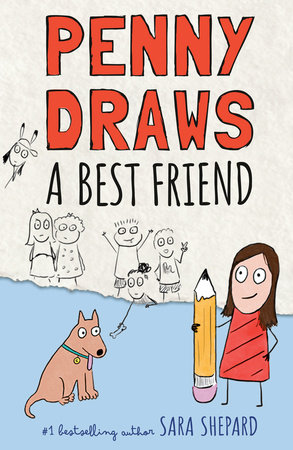Text Those Worries Away
by Sara Shepard
At the start of the last school year, I let my son get a phone. It was primarily because our school is a walking district, and I like to track him to and from school and when he goes for bike rides. He’s also able to text, and at first, we sent funny memes and songs back and forth. But lately, his texts have been a little…different.
“My leg hurts.”
“Is it dangerous that I swallowed shampoo in the shower?”
“There are itchy spots on my arm.”
I text back with questions like, “Did you bang your arm on something? It’s probably that.” Or, “Everyone accidentally gets shampoo in their mouths from time to time.” And, “How many spots are we talking?” Often, I get four or five of these texts a day. He always apologizes with something like, “I know I’m overreacting.” But I identify. He’s exactly like how I was — and still am.
When I was in fifth grade, I went to sleepaway camp for the first time. With its scavenger hunts, campfires, and canoe trips, it was a summer rite of passage…but I also wrote letter after letter to my mom about every ache and pain I had, how little sleep I was getting, and even how I wasn’t sure the camp counselors were taking very good care of us. Camp was only for a week, so my mom probably got the letters after I’d returned. But the only thing that helped me to cope with being in a new place and how out of control I felt was to write down the stuff I was worried about — and put those worries in someone else’s hands. I figured that if anything I wrote was terribly bad, my mother would show up at camp and fix it. I think that’s what my son is doing with all of his minor-crisis texts, too.
In my new series, Penny Draws a Best Friend, Penny is also a big worrier — and she writes down her worries in letters to her dog, Cosmo, who she knows won’t ever judge her. Penny feels like she’s the only one of her peers who worries, but as she gets to know more people on a deeper level, she realizes that’s far from the truth. And it’s not something happening just in the book. During elementary school visits to promote the book, I ask kids, “Do any of you worry a lot?” Nearly every hand goes up. Sometimes the hands rise slowly. Sometimes kids look around sheepishly, or they laugh and mumble, “Yeah, silly me.” But they don’t feel so silly when they notice that everyone else is in the same boat.
And that’s the thing. Lots of people worry. There’s so much in the world that is out of our control and scary. But hiding your feelings away, keeping them to yourself — that’s not always the best answer. It’s good to let those feelings out — whether that’s through panicked letters, or drawings, or talking to a friend or your parents or another trusted adult. Admitting you’re worried is normal, and it’s also brave. And while worrying might be a trait you’re stuck with for life (these days, instead of letters, I make lists, talk to friends, or get comfort through petting my dogs) — if you have a way of coping with those worries when they pop up, they won’t overtake your life. Or, for that matter, ruin your fun!
Because it didn’t ruin my fun at camp. In fact, I’d completely forgotten I’d written those letters until just a few weeks ago. In the Penny series, my intention is that it doesn’t ruin her life, either. And hopefully, through his texts, my son feels the same sort of reassurance: he can send me his worries as much as he wants, and I’ll absorb all of it.
Though, by the way — those spots on his arm my son was concerned about? I pictured thirty or forty — a terrible rash. My imagination spiraled. I was ready to call the doctor. Guess how many there actually were?
Two.
-
Get the Book:

